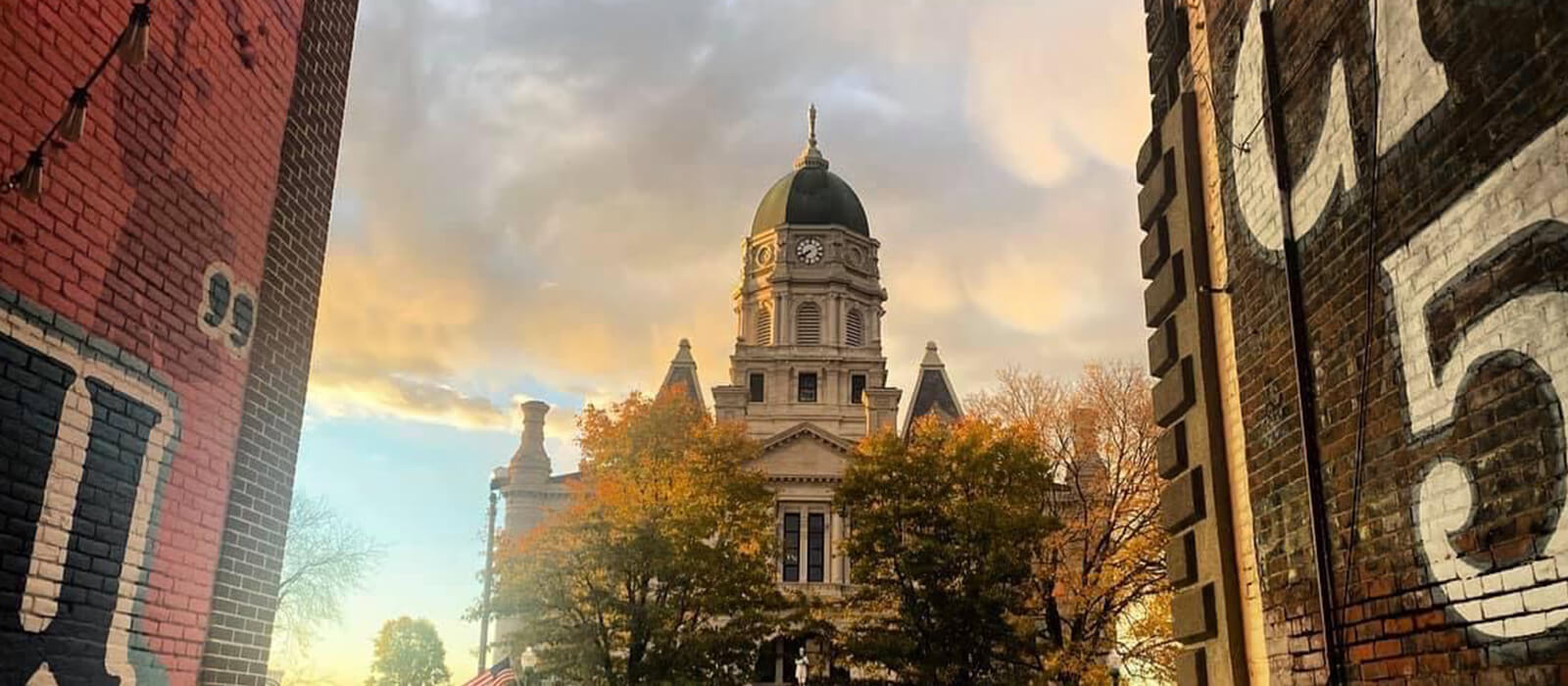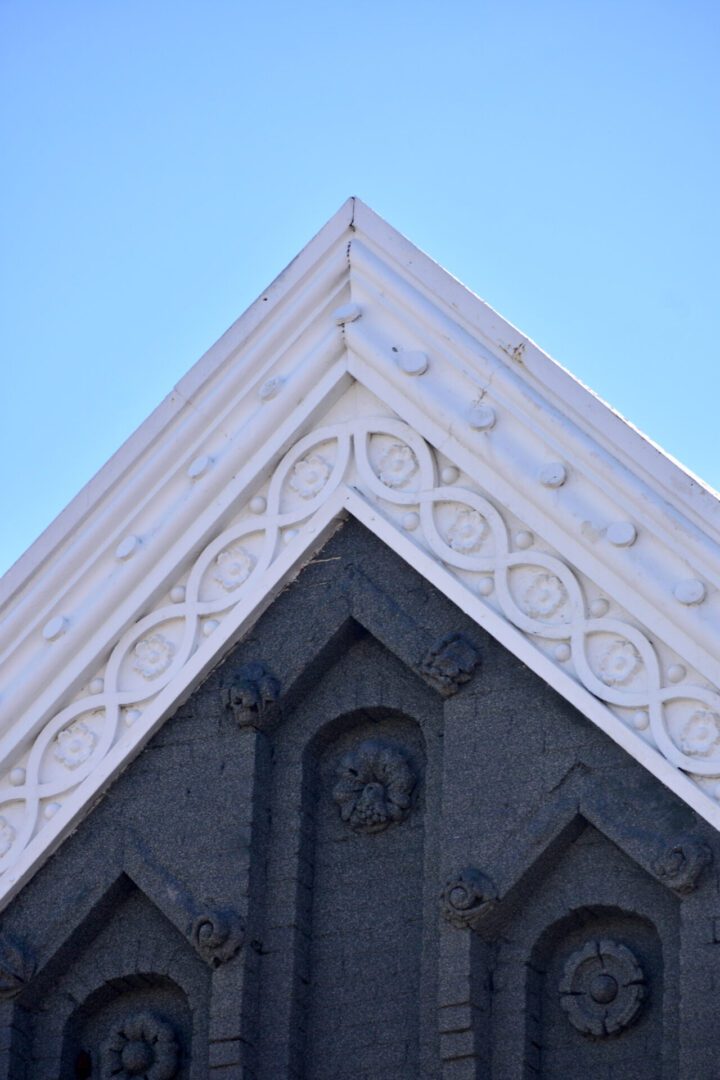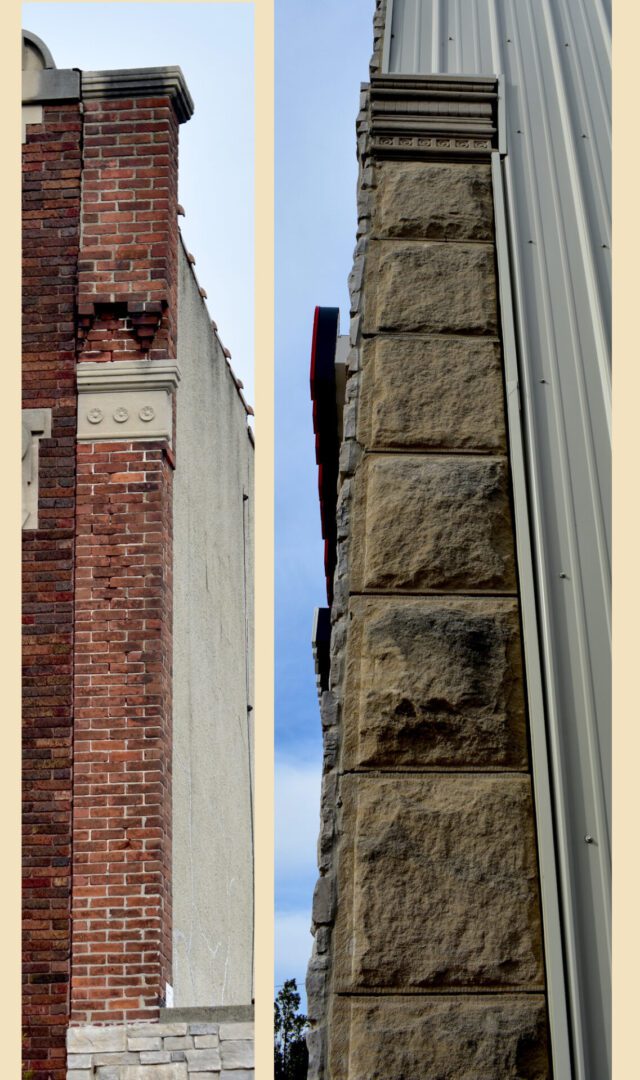From Farmers Loan & Trust to the Whitley County Government Center: A Landmark’s Story
by Rachael Hartman, Whitley County Historical Museum curator
Today, we know this address at 220 W. Van Buren St. to be the location of the Whitley County Government Center. Before this, though, and for many years, it was the home of a different kind of institution – the Farmers Loan & Trust.
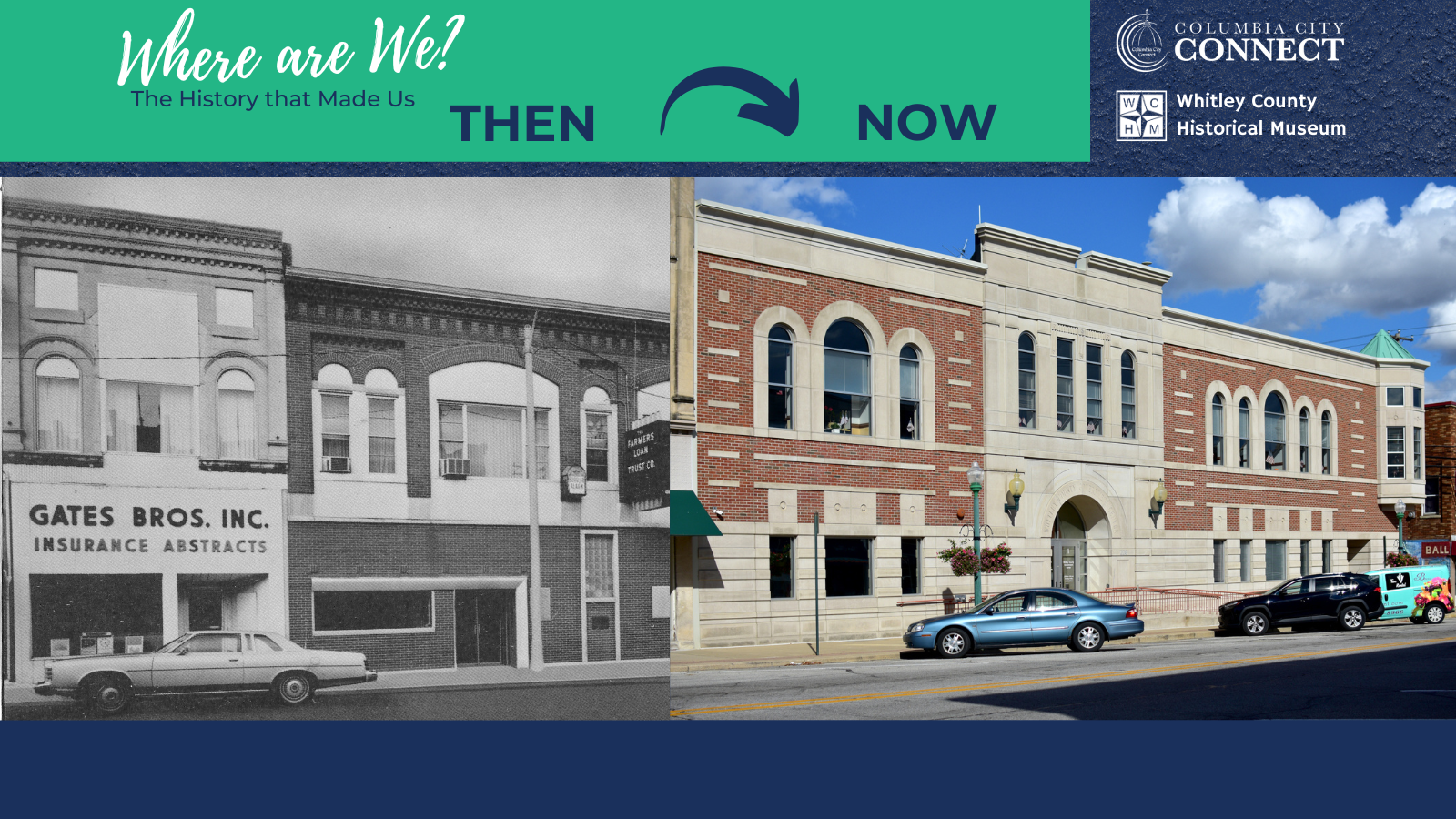
In April of 1907, Benton Eli Gates and a group of like-minded individuals decided to combine their resources and knowledge to form the Farmers Loan and Trust Company. Gates had already been involved in organizing the Whitley County Building-Loan Association. In 1904, he also helped to organize the Columbia City National Bank.
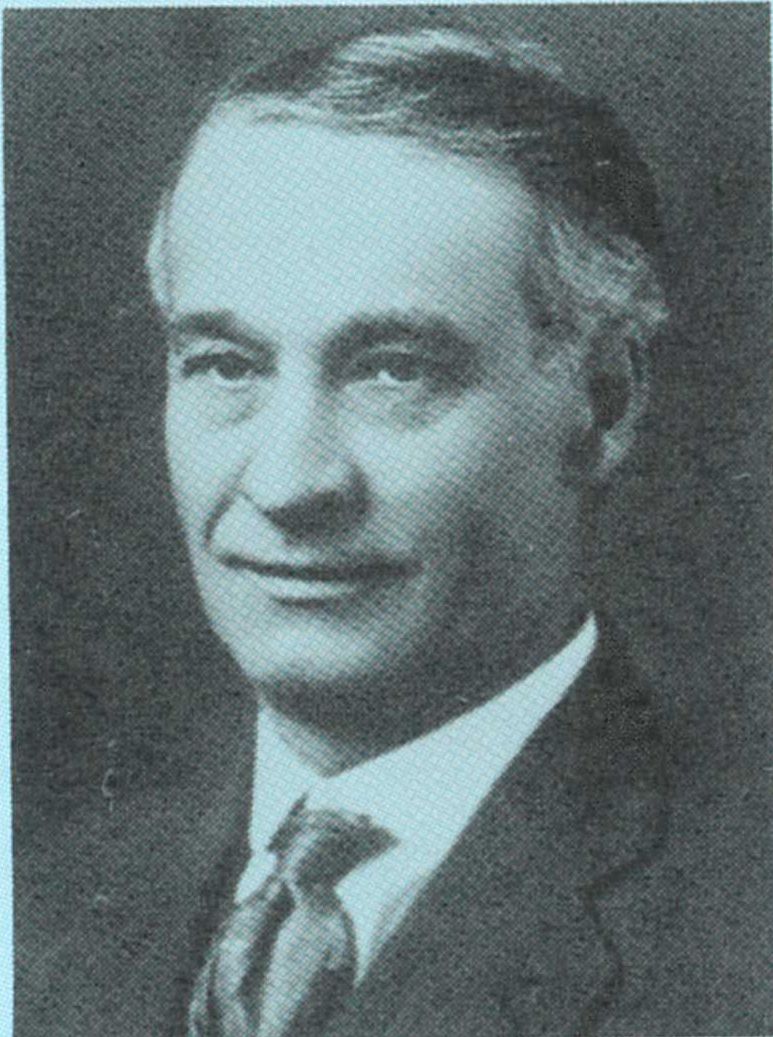
Photo from the Whitley County Historical Museum Collection.
The Farmers Loan and Trust Company first began April 9, 1907 in the office of Gates and D.V. Whiteleather, which was located on the second floor of the Columbia City National Bank.
This business quickly grew and on July 9, 1910 the company opened at its new location on West Van Buren Street. According to records provided by the business, doors opened that day at 9 a.m. and its first customer was Henry E. Romey, who owned a local hardware business.
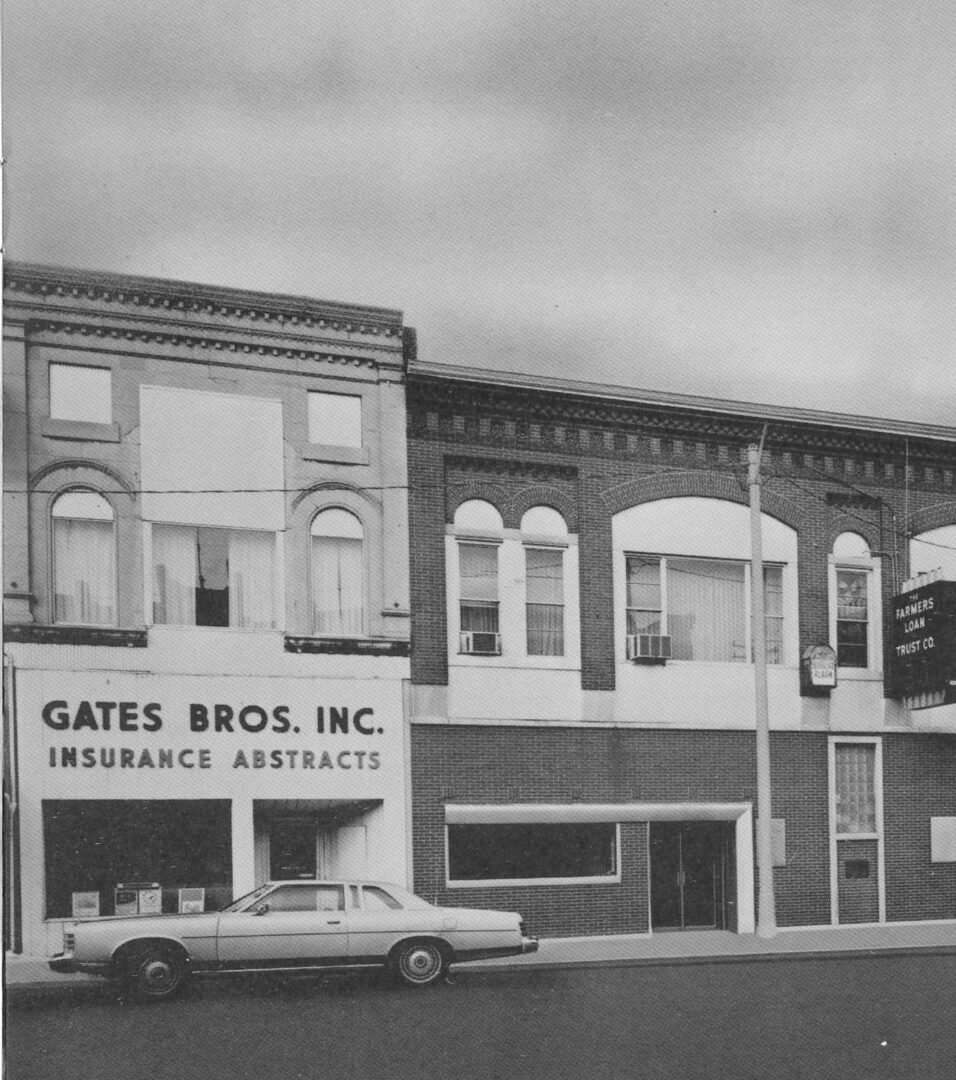
Photo from the Whitley County Historical Museum Collection
Benton Gates would remain the company’s president until 1922, but it stayed in the Gates family for a number of years. Ralph Gates, who also served as Indiana Governor from 1945-1949, was director and counsel to Farmers Loan and Trust for 52 years. In 1938, John Gates was named its president, and he served in that role until he retired in 1969. After that, the role of president went to Jack S. Gates.
As for the building, it expanded its space when the Farmers Loan & Trust purchased the Bechtold Grocery building in 1946. Four years later, these buildings were combined and remodeled into one unified storefront. It allowed for continued growth, but also modernization. In 1948, for example, the company was able to add the county’s first night depository service. Then, in 1955, the company installed the county’s first automobile drive-up banking service.
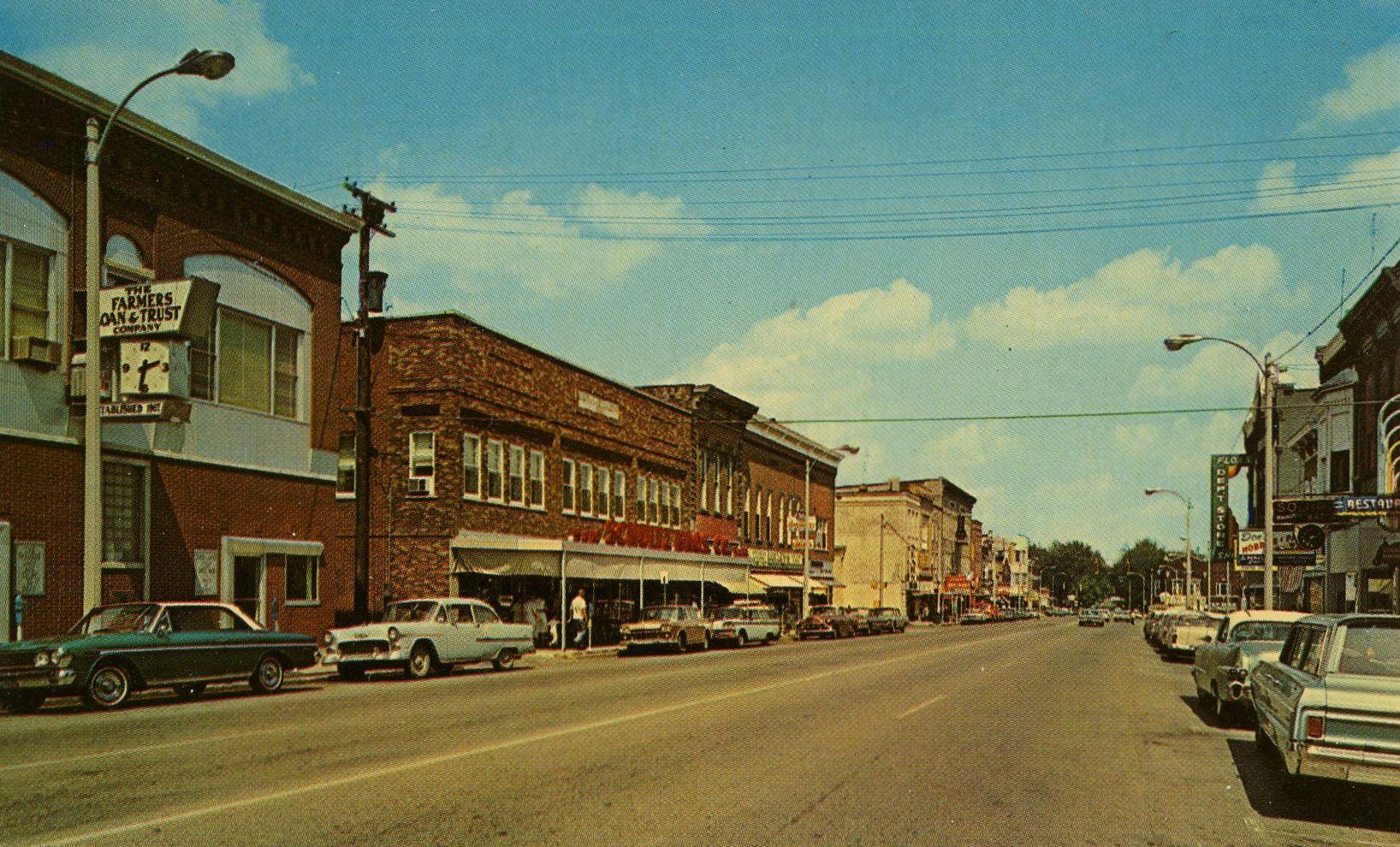
Photo from the Whitley County Historical Museum Collection
In 1965, the building to the west of the bank was also purchased, and the rear of the building was converted into a new work area and expanded drive-up facility. The front of the bank was rented to Gates Brothers Insurance and Abstract Co.
News articles acknowledge that by 1990, Farmers Loan and Trust Co. was the second largest bank in Whitley County. In June of that year, the company was acquired by INB Financial Corporation, of Indianapolis.
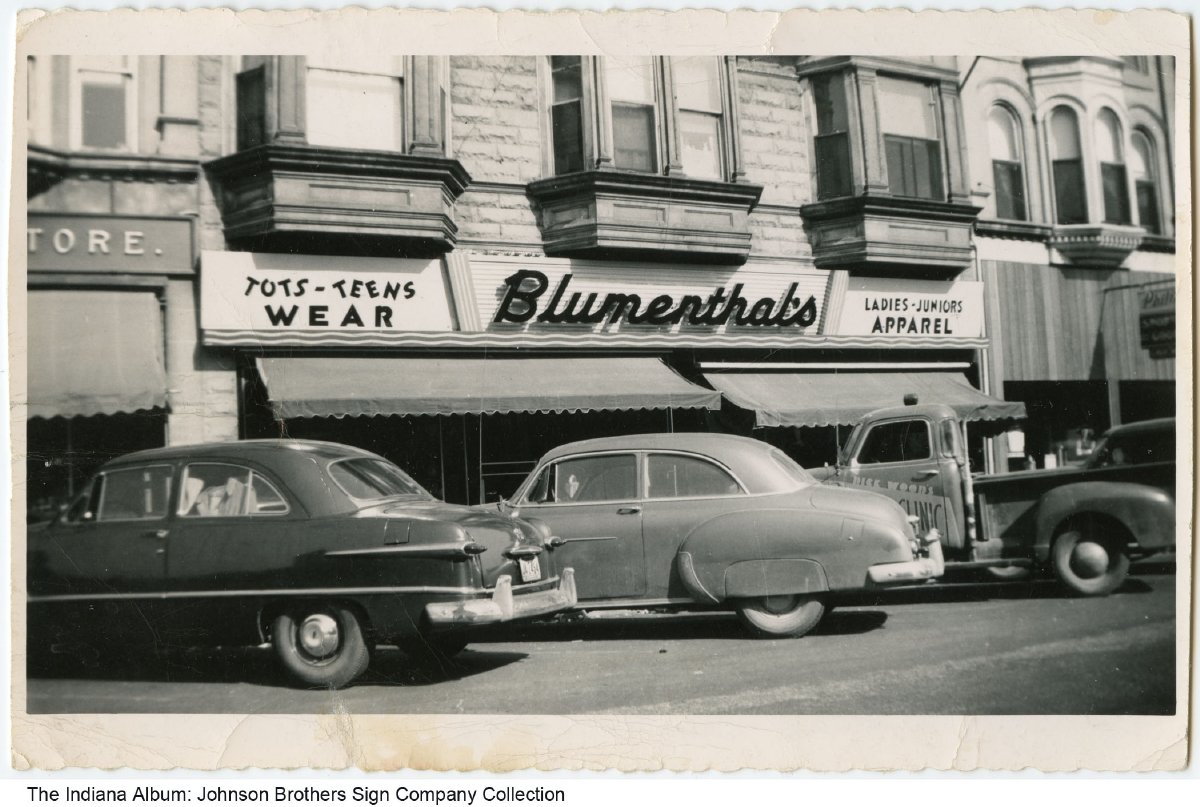
By 2002, Whitley County government offices were outgrowing their locations in the Courthouse and the Jail, so the County Commissioners acquired the Farms Loan and Trust and the Ricker buildings in 2003 for a new government office building.
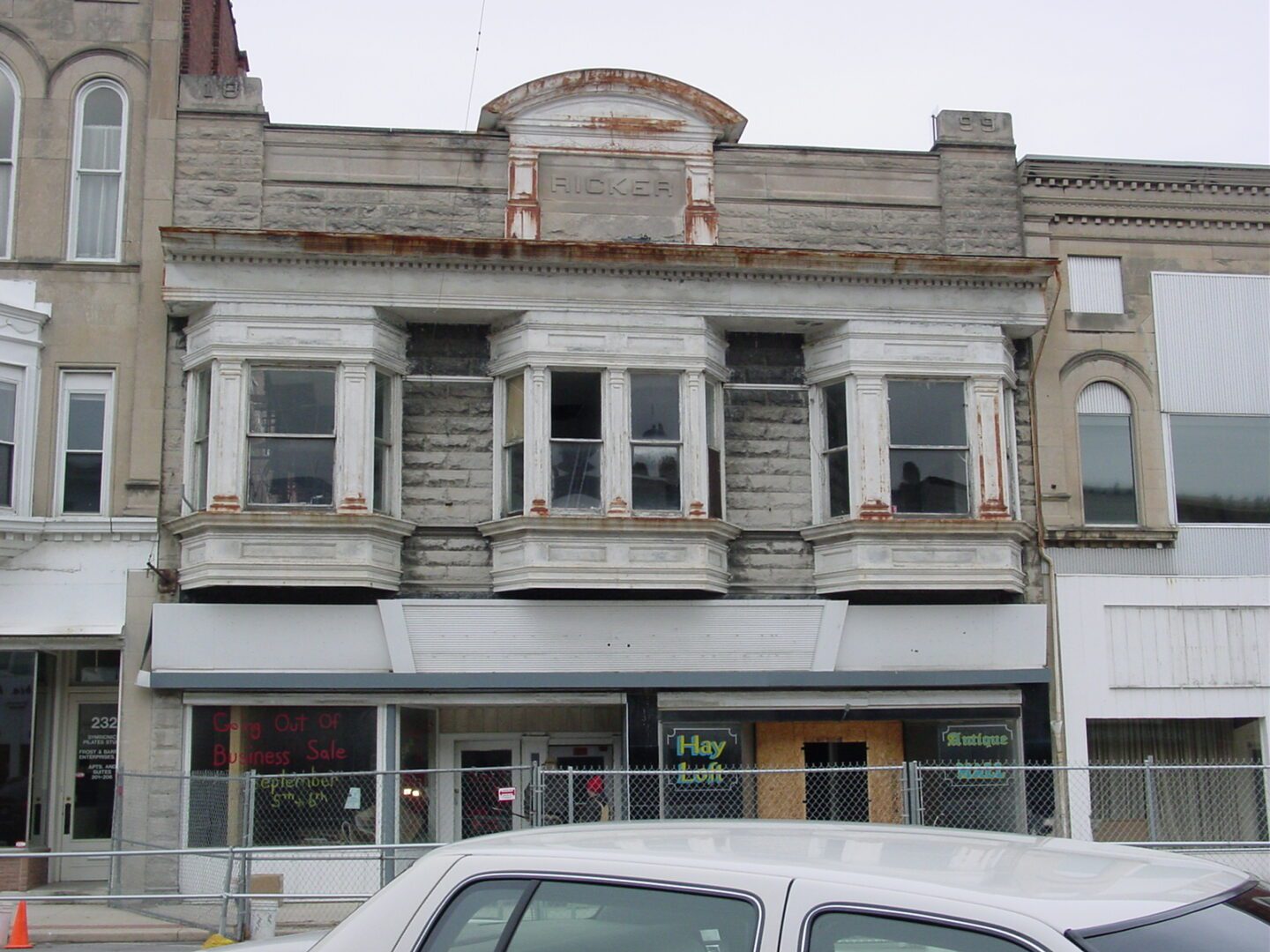
The design of the new facility was the source of debate: there were some advocates for a lower cost, single-story metal building, while others wanted a more expensive, multi-story, and architecturally-significant building. In the end, it was decided that spending more to construct a building that would “last a century” would be more financially prudent, leading to the design that was ultimately constructed in 2005.
Thank you to Rachael Hartman for her outstanding research and writing of the article and the Whitley County Historical Museum for sharing photos from its collection.
𝑾𝒉𝒆𝒓𝒆 𝒂𝒓𝒆 𝑾𝒆: 𝑨𝒓𝒄𝒉𝒊𝒕𝒆𝒄𝒕𝒖𝒓𝒂𝒍 𝑯𝒊𝒔𝒕𝒐𝒓𝒚
These stone arches are pretty simple architecturally, but the style they represent is more important when taken in the context of downtown.

The arches are part of the Whitley County Government Center on West Van Buren Street.
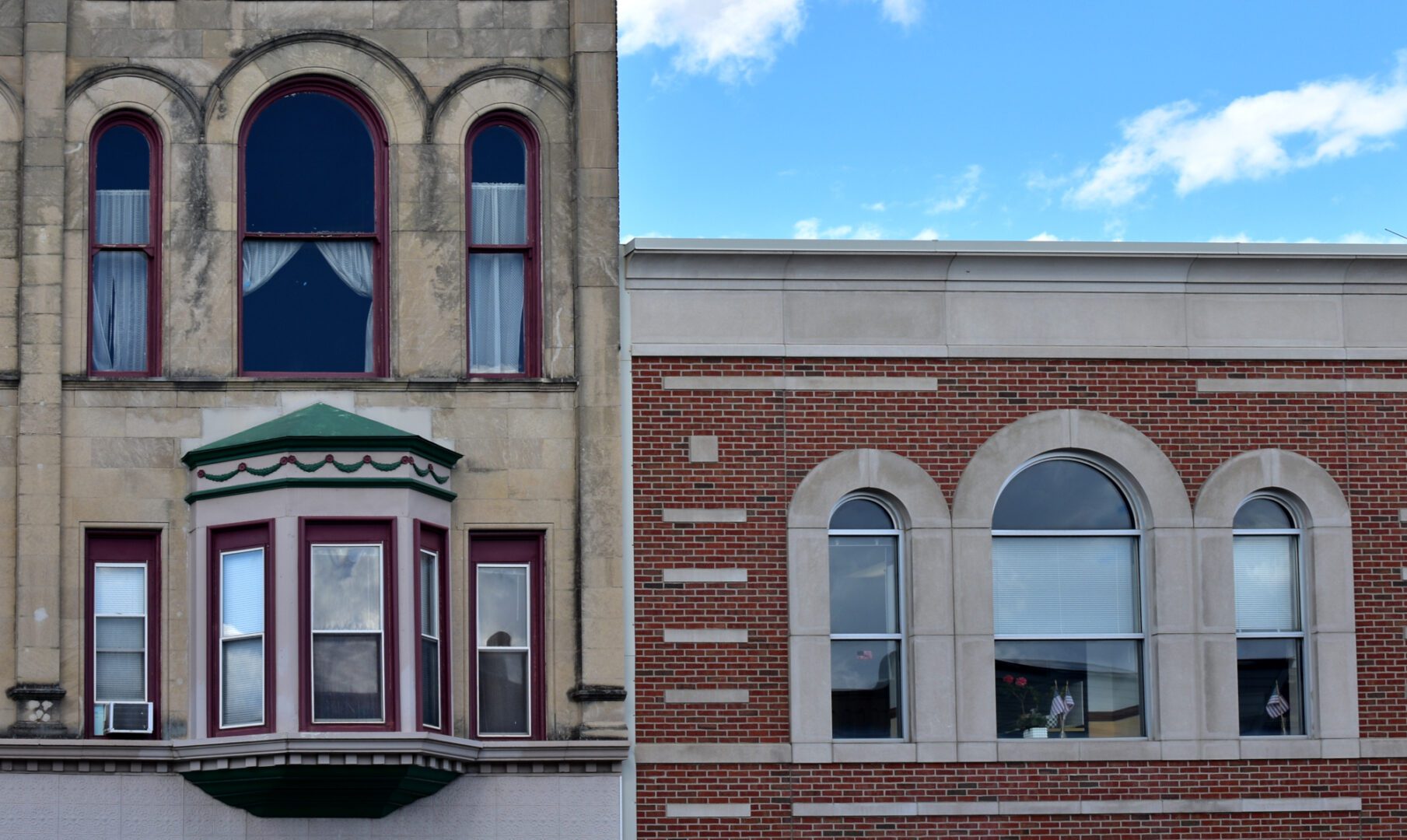
While the building is only twenty years old, its neotraditional architecture is sensitive to the historical environment of downtown. Some features, such as the window arches, virtually copy those found on the Raupfer building next door, while other details, like the dentils above the center second floor windows, echo features of the two buildings that the Government Center replaced.
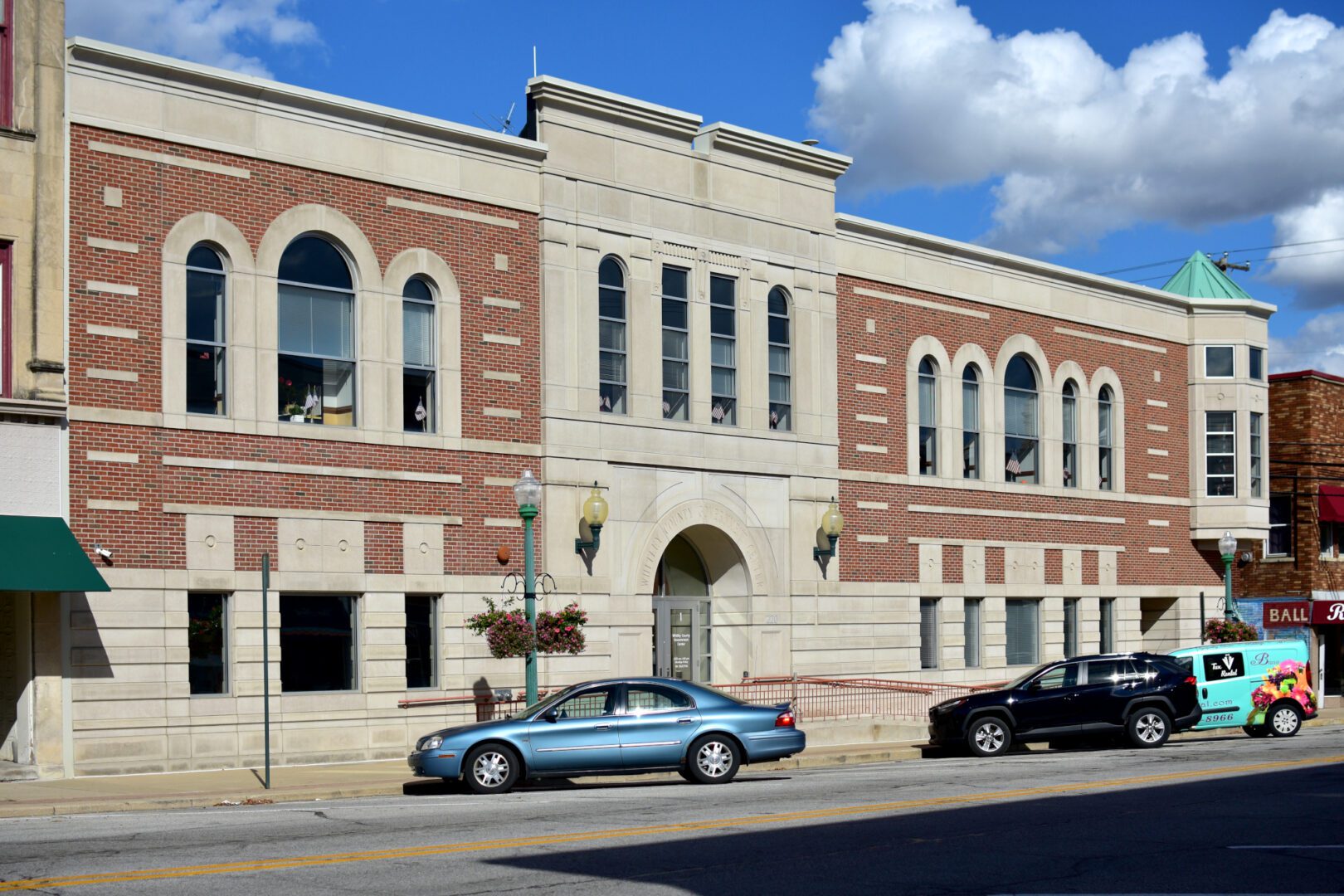
The stone lintels, the corner turret, and roundel accents are more unique to this building. While this building would never be confused with a 120 year old structure, its context sensitive design is important to maintaining the integrity and consistency of our historic downtown.
Thank you to Nathan Bilger for providing the recent photos and valuable insights into the architectural history.
For more Columbia City History, check out the Windows into History series at the Columbia City Connect’s website: Windows into History Archives – Columbia City Connect
